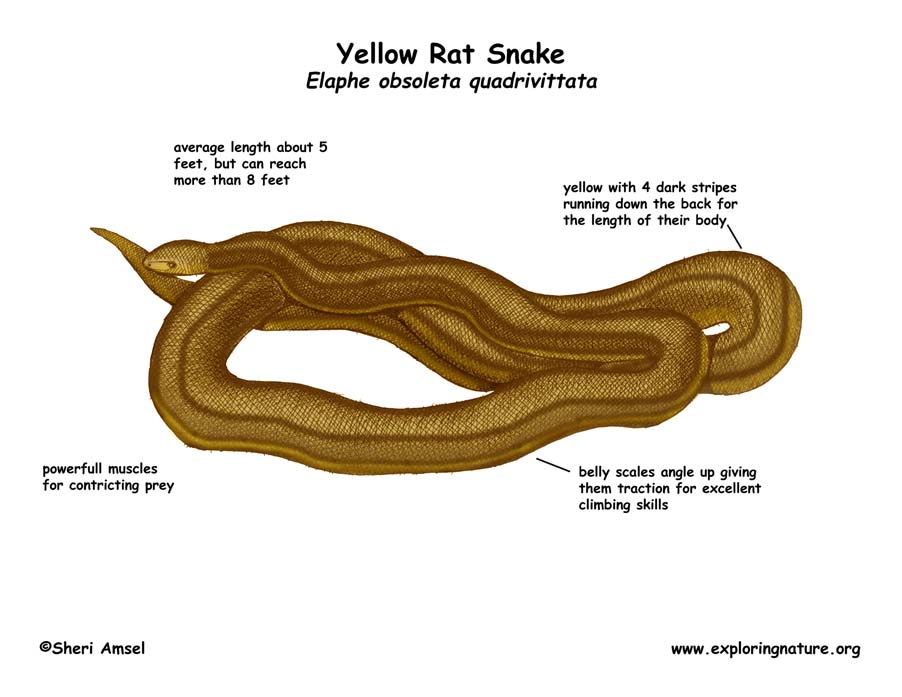

They are found in the Southern Atlantic states along the coast from North Carolina to Florida. The rat snake's niche in the Northeastern U.S. is filled by the black rat snake.
They live in coastal hardwood and upland forests, cypress swamps, scrub pine habitats and human habitats like: farms, citrus groves, barns and out buildings.
They start out grayish with darker splotches down their back. As they age, they turn yellow with 4 dark stripes running down the back for the length of their body. As adults, they average about 5 feet long, but can reach more than 8 feet. Their belly scales angle up giving them traction for excellent climbing skills.
They are constrictors, squeezing their prey to death before eating them. They are active day and night, though more nocturnal in summer months. They can move very fast and be aggressive if threatened lifting the front of their body off the ground to strike. Because they are rodent eaters, they are a beneficial snake to have in barns. They can climb trees and rafters in barns.
They eat rodents, lizards, insects, birds and eggs.
They are preyed upon by hawks.
Females lays up to 20 eggs in a clutch.
Kingdom: Animalia
Phylum: Chordata
Subphylum: Vertebrata
Class: Reptilia
Order: Squamata
Suborder: Serpentes
Family: Colubridae
Genus: Elaphe
Species: E. obsoleta quadrivittata
When you research information you must cite the reference. Citing for websites is different from citing from books, magazines and periodicals. The style of citing shown here is from the MLA Style Citations (Modern Language Association).
When citing a WEBSITE the general format is as follows.
Author Last Name, First Name(s). "Title: Subtitle of Part of Web Page, if appropriate." Title: Subtitle: Section of Page if appropriate. Sponsoring/Publishing Agency, If Given. Additional significant descriptive information. Date of Electronic Publication or other Date, such as Last Updated. Day Month Year of access < URL >.
Amsel, Sheri. "Snake (Yellow Rat)" Exploring Nature Educational Resource ©2005-2024. December 15, 2024
< http://exploringnature.org/db/view/535 >

